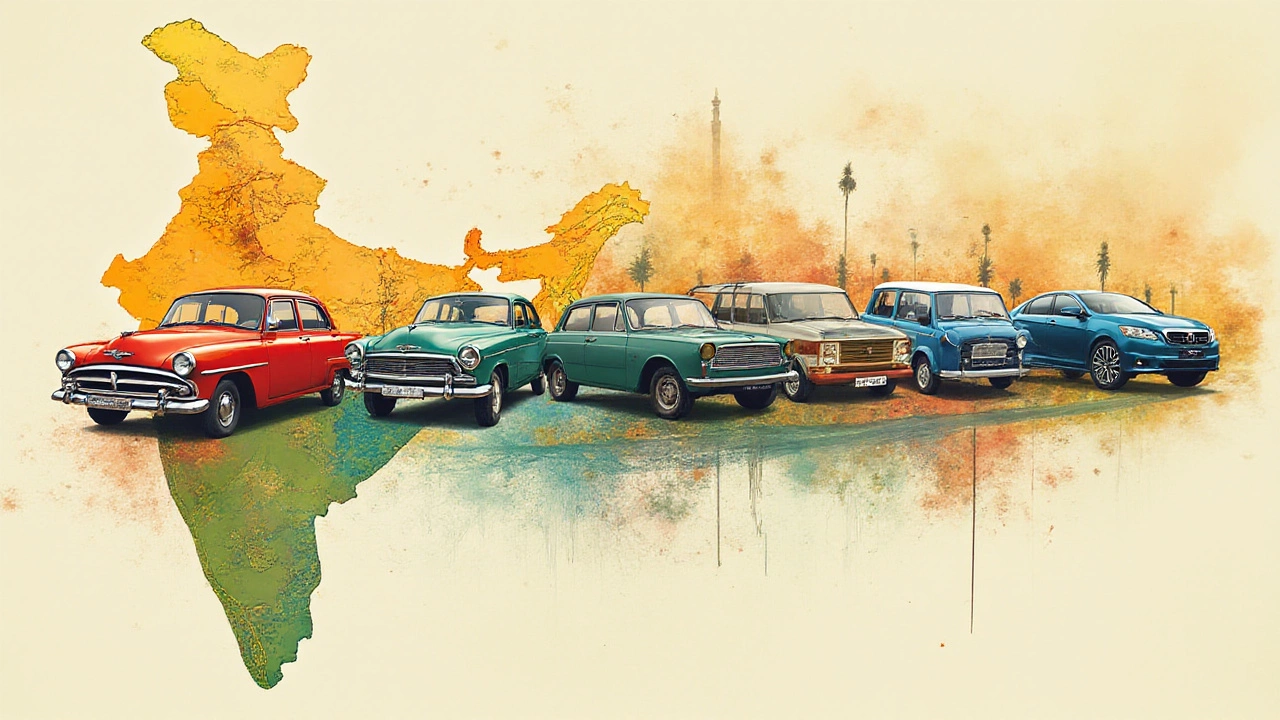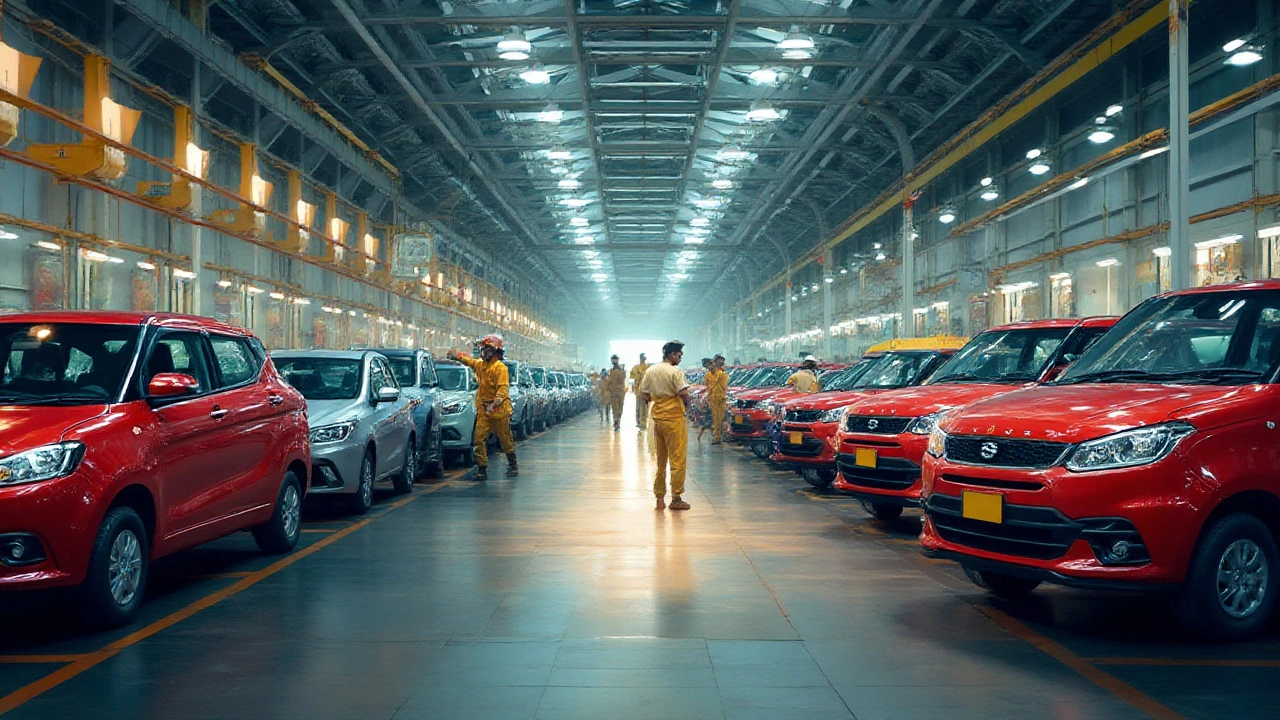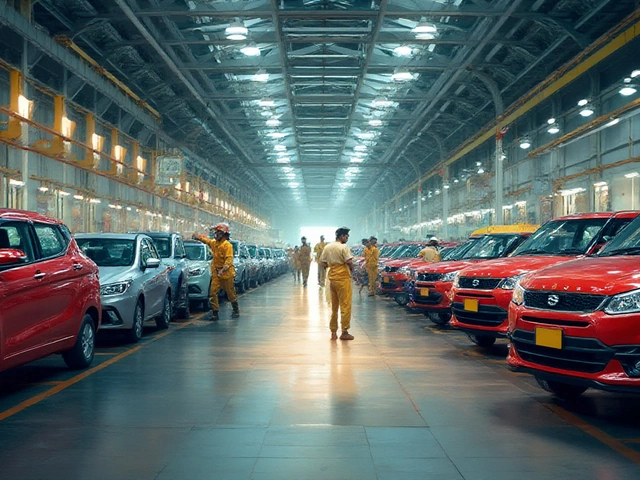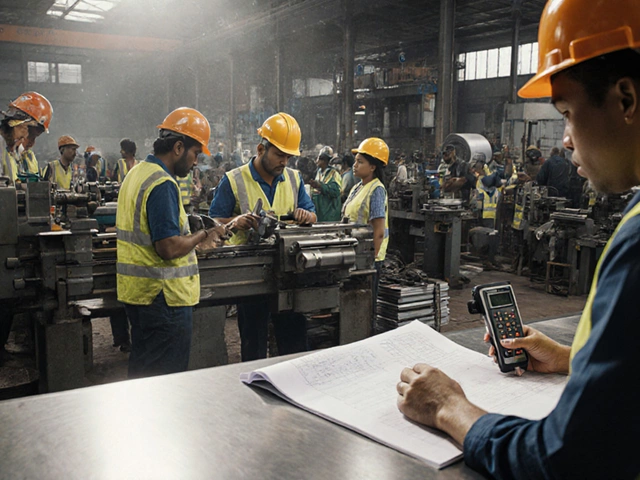Indian cars don’t usually pop into people’s heads when you think about world-famous automakers, but they've quietly changed the global auto story. Imagine the scene: city streets crammed with compact hatchbacks, countryside lanes humming with sturdy SUVs, and highways flashing with stylish sedans—all stamped with ‘Made in India’. Most drivers in Europe barely realize that some of those ride-sharing cars or delivery vans have Indian roots. Now, that’s intriguing. But which brands are actually Indian, how did they rise, and what should you know before considering their cars?
The Main Indian Car Brands Redefining the Auto Landscape
Tata Motors really sets the pace. The company, started back in 1945 as Tata Engineering, isn't just a household name in India—its footprints stretch across continents. Maybe you’ve heard about the famous Tata Nano, once the world’s cheapest car. Or perhaps you’ve spotted those sturdy Tata trucks on construction sites abroad. But Tata doesn’t just play at the low-cost end; they own Jaguar Land Rover. So, next time you see a luxurious Land Rover Evoque zipping through the UK rain, remember it rolls out thanks to Indian vision and investment.
Next up: Mahindra & Mahindra. Their rugged SUVs, like the Mahindra Thar and Scorpio, are basically legends in Indian towns and villages. These vehicles are built tough, perfect for rough terrain or city chaos. What’s clever? Mahindra makes electric cars too—like the e2o and the eVerito. The brand even bought SsangYong Motor in South Korea (though let’s admit, that chapter got complicated and Mahindra eventually left the partnership, but the ambition was rock-solid). If you see a tractor ploughing in a British field, odds are decent it’s a Mahindra. They’re one of the biggest tractor makers worldwide, exporting to more than 40 countries.
Then you’ve got Maruti Suzuki. Here’s the twist: it started as the Indian government’s darling, becoming a proper icon in the eighties with the Maruti 800. While Suzuki from Japan supplies the tech muscle, the manufacturing and model adaptation happens right in India. These guys sell crazy numbers—more than half of all passenger cars in India wear the Maruti Suzuki badge. Their bestsellers? Swift, Baleno, Dzire, and lately, the compact SUV Brezza. The vehicles ooze practicality—simple, cheap to run, and tailor-made for Indian conditions.
Don’t forget Force Motors and Ashok Leyland. If you spot minibuses, school transport, or delivery trucks in the middle of the night, there’s a fair chance one of these companies built them. Ashok Leyland especially is a powerhouse in buses and commercial vehicles—second only to Tata in sales. And Force? Their Traveller line moves millions daily.
Here’s a quick glance at some main brands and what they’re known for:
| Brand | Known For | Notable Models | Founded |
|---|---|---|---|
| Tata Motors | Cars, SUVs, Electric vehicles, Luxury (via Jaguar Land Rover) | Indica, Nano, Tiago, Nexon, Safari | 1945 |
| Mahindra & Mahindra | SUVs, tractors, electric vehicles | Thar, Scorpio, XUV500, Bolero, e2o | 1945 |
| Maruti Suzuki | Small cars, sedans, hatchbacks, SUVs | Swift, Alto, Dzire, Baleno, Brezza | 1981 |
| Ashok Leyland | Buses, trucks, commercial vehicles | Dost, Comet, Viking | 1948 |
| Force Motors | Minibuses, multi-utility vehicles | Traveller, Force One | 1958 |
How India Became a Car-Making Powerhouse
You probably think of India as a tech or outsourcing hub, but cars? The growth has been mad. The story really took off in the early 1980s. Before that, choices were grim: cars like the Hindustan Ambassador, a workhorse basically copied from old Morris Oxford designs, ruled forever. The real switch happened when Maruti Suzuki and international players entered the scene. Suddenly, millions of families who could never dream of four-wheel mobility went car shopping.
What gave India an edge? First, a massive domestic demand. In 2023, India produced more than 4.5 million cars. That's not a small feat—the country smashed past Germany, landing at number three worldwide behind only China and the US. The roads are admittedly wild, but automakers learned to build sturdy, fuel-efficient, affordable vehicles that can survive potholes, floods, heat, and wild city traffic. A car made for India is, let’s say, battle-tested.
The workforce is young, tech-savvy, and available in droves. Around 37% of India’s population right now is under 25. It means millions trained in engineering and design, eager to make their mark. Parts suppliers cluster around manufacturing hubs, reducing costs while letting makers like Tata and Maruti cut the fat from their production lines. Assembly is often semi-automated but always closely monitored for quality—India wants long-term customers, not just a quick buck from a shipment abroad.
Here’s something not so obvious: Government policies actually helped. Once the government loosened up investment laws and handed incentives to car manufacturers, global companies jumped in. The resulting partnerships and tech transfer ensured Indian brands like Tata, Mahindra, and even Bajaj mastered everything from small city runabouts to sophisticated electric cars. Factories now churn out not just for the home market but export across Europe, Africa, the Middle East, and even the Americas.
Plus, electric mobility is gathering pace—a chunk of new R&D money now flows into electric and hybrid vehicles. Tata’s Nexon EV, for example, is India’s best-selling electric car, hitting just under 90% market share for passenger EVs in India by mid-2024. If buzzwords like ‘green’ or ‘zero-emission’ matter to you, Indian brands are already in the game.

The Changing Face of Indian Cars on the Global Market
Forget the idea of Indian cars as just cheap, basic rides—they’re getting global attention. Recently, Tata Motors started exporting its Punch micro-SUVs and Tiago hatchbacks to several African and Latin American countries. Maruti Suzuki, already famous in Nepal, Sri Lanka, and Africa, even sent made-in-India Swifts and Balenos to Europe and the Middle East. Mahindra isn’t resting either. Their rugged SUVs are expanding to Australia, Africa, and even North America—with the Roxor, a farming vehicle built for the US market (though it hit a hurdle over Jeep copycat claims).
Japanese, American, and even British carmakers have realized India’s power as an export hub. Kia’s India plant in Andhra Pradesh is now a backbone of the Korean brand’s exports—thousands of Seltos SUVs head to the Gulf and Latin America every month. Hyundai does the same, exporting i10s and Vernas far beyond Indian shores. But homegrown brands are learning tricks too: Tata currently ships vehicles to over 50 countries, and eyes more European markets as emission norms tighten. Back in 2021, Tata’s Nexon EV got buzzy coverage in the UK—people were shocked at its affordable price.
Let’s crunch some export stats. In 2024, India exported over 670,000 cars, including both domestic and joint-venture brands. And it’s not just finished cars—Indian suppliers ship engines, transmissions, and other parts to Fiat, Ford, Renault, and BMW plants worldwide. Basically, if you drive a global car brand, chances are something ‘made in India’ helps it run.
| Year | Cars Produced (Millions) | Passenger Cars Exported |
|---|---|---|
| 2021 | 3.6 | 445,000 |
| 2022 | 4.2 | 560,000 |
| 2023 | 4.5 | 595,000 |
| 2024 | 4.7 | 670,000 |
Car safety used to be a weak spot, but that's changing fast. The Tata Nexon scored a full 5-star rating on the Global NCAP crash test in 2023—that’s a rare brag for an Indian car. Maruti’s Brezza is following suit. Anti-lock brakes, airbags, and stability controls are now common, not just luxury add-ons.
Tips for Buying or Investing in Indian Car Brands
So you’re curious about actually buying an Indian car or getting in on the business? Here’s where things get real. First, research has never been easier—every major Indian brand runs slick websites with endless detail. But don’t just trust glossy marketing. Hunt for owner reviews, check global safety ratings (especially anything from Global NCAP or Euro NCAP), and see the after-sales support available in your city or country. Indian cars score best on value for money—low maintenance, decent build, and efficient engines. Still, ask questions about spare parts availability, especially if you’re picking a less common model abroad.
If you smell opportunities in the business side—maybe you want to import, sell, or even partner with an Indian automaker—check their global tie-ups. Tata, for instance, already makes Jaguar and Land Rover, so new launches in the UK often involve Indian factories. Mahindra is constantly testing the waters for new distribution partners and has a sharp eye on electric mobility. Maruti Suzuki seems to test every possible market before they go big, so watch for smaller trial exports and read up on their dealer networks. Data from 2024 shows Tata and Mahindra both increased European partnerships by 15–20% over the previous year—so it’s a hot sector right now.
Here’s a streetwise tip: If buying a used Indian car from abroad, double-check if the model was made at the Indian plant or overseas. Specs sometimes change for markets like Europe—think improved emission or safety features. Don’t get caught with a car missing essentials like heated seats or standard airbags if you expect them in your country.
- Inspect warranty coverage: Many Indian makers now offer 5–7 year warranties globally.
- Look for authorized service centers near you, not just shiny dealerships.
- Brush up on import taxes—Indian-made cars might be competitively priced but taxes can swing the deal.
- Ask about electric or hybrid options—Tata’s Nexon EV is surprisingly affordable to run, and Mahindra has solid hybrid tractors and fleet cars.
- Watch tech trends: Indian cars now pack Apple CarPlay, Android Auto, and even built-in navigation on many budget models.
India’s auto scene won’t slow down anytime soon. Major brands are now hunting for innovations: Tata is dropping new SUVs, Mahindra aims for premium electric launches, and Maruti Suzuki is eyeing exports to new European countries. More smart tech, more value, and ever-tougher cars built for real-world conditions—it’s only the start.





